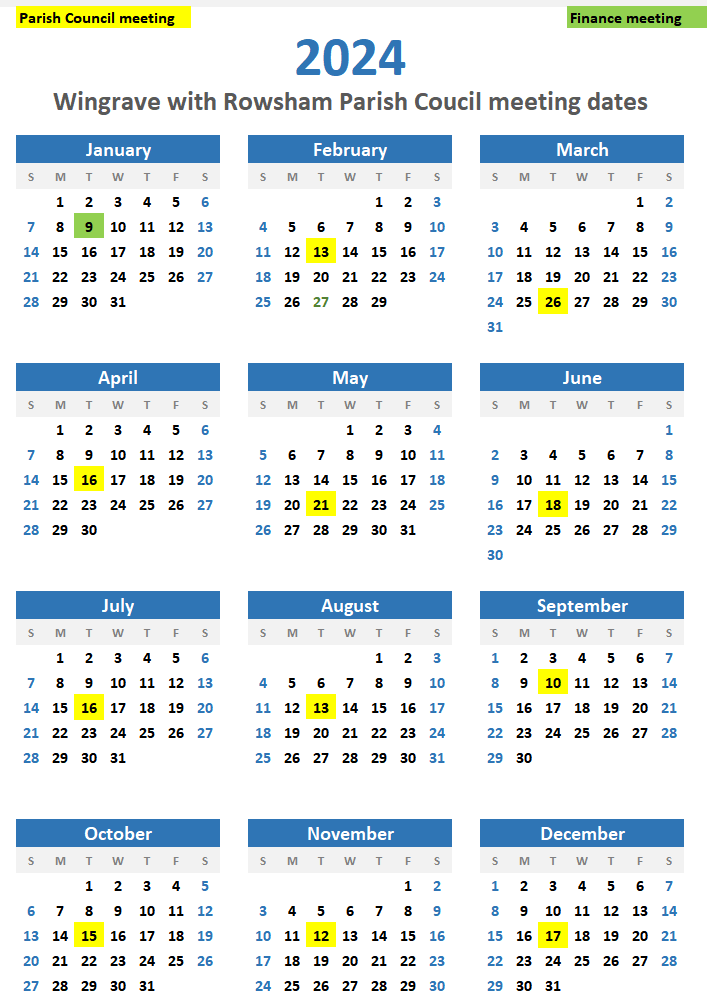Neighbourhood Plan Q&A
Wingrave & Rowsham Neighbourhood PlanQuestions and Answers re Parishioners' Comments re the Wingrave with Rowsham Neighbourhood Plan 2015 to 2033
A number of residents have put comments re Parish development to 2033 either on their preference slips at the public consultation event on the 20th and 21st of February or by e-mail, postie etc. We have put together some questions and answers to these for as wide an audience as possible.
Why do we need 90-130 houses to be built in the Parish by 2033?
When AVDC submitted its Local Plan to the National Inspectorate at the end of 2013, AVDC had included 13,500 homes in the Vale compared to an existing housing stock of 76,000, and had allocated up to 50 homes to each of the 20 larger villages in the Vale. Wingrave is a larger village whereas Rowsham is not.
This plan was rejected because it did not consider overspill from surrounding areas such as London, Milton Keynes, High Wycombe, Oxford etc.
The most likely figure now being considered by Aylesbury Vale in its revision of its Plan is 30-35,000, so the allocation per large village is likely to increase pro-rata. This high growth in AVDC reflects the relative ease of contact between the Vale and London, plus an important recent shift in demographics to lower occupancy per dwelling, typical of an ageing population, later marriage and later children.
AVDC have indicated that 90-130 homes would be appropriate but cannot be exact at this stage. This represents a growth of between 5 and 7.2 homes per annum compared to a growth between of 1971-2011 of 8 homes per annum.
When will AVDC`s revised plan be submitted?
2017 at the earliest.
Is having no houses built an option?
No. This is quite clearly not an option.
Why do we need a Neighbourhood Plan?
There are now numerous examples around the country where Neighbourhood Plans are being used to ensure that housing development, where it occurs, offers the best compromise, on both number and design, to the existing community.
The absence of a Neighbourhood Plan means that both of these factors are more at the behest of developers and relatively distant planning authorities. A plan represents an excellent opportunity for the community to express its preferences.
If a Neighbourhood Plan exists, does it confer protection against unwanted development?
Yes. Numerous examples now exist where unwanted developments have gone to appeal and lost because they were not included in the Neighbourhood Plan.
Will houses be built on Green Belt land in the Parish?
There is no Green Belt land in the Parish so this is not an issue.
How many sites were submitted in Wingrave for assessment?
We were obliged by the Neighbourhood planning process to write to all the landowners with land adjacent to the village (52 in total) as there is little infill space left in the village, following a more than doubling of the number of houses in the village in the period 1971 to 2011, asking if they were interested in developing their land.
Twenty one sites were offered with land sufficient to accommodate more than 1,000 homes at a density of 20 houses per hectare. Almost three quarters of these were either too small to generate the affordable housing requested by previous consultations with the Parish, or had poor access in an area designed originally for horses and carts, or were separated from the village which would encourage sprawl which is not supported by planning authorities. Four of the sites were actually only two sites as they were adjacent sites with the same owner. Two could not be included in the consultation as the owner had stated that they would only be developed if the parish had no other choice, which was clearly not the case.
The four sites put forward for consultation with village were in the view of the Neighbourhood Plan Steering Group, the Parish Council and its consultant planner the best possible options.
Why were the sites put into clusters at the public consultation?
The Parish had already expressed a preference for smaller developments and to make a total of 90-130 houses clusters were therefore necessary as none of the sites put forward for consultation were large enough to accommodate the total.
Why were more of the sites put forward at the Leighton Road end of the village?
This was not deliberate. It was where the sites judged on their individual merits to be the best happened to be. The sites actually selected by the Parishioners are reasonably spread across the village.
Can phasing of building be included in the plan to 2033?
Phasing is a legitimate part of the plan and will be included to ensure minimal disruption.
Issues with access to selected sites.
These have all been noted and will be addressed with developers appropriately.
What happens next?
The Pre-submission draft plan goes out for consultation as soon as possible to AVDC having incorporated initial responses from a wide range of consultees which included: The Environment Agency, Natural England, English Heritage, Buckinghamshire County Council, AVDC and of course, the Parish.
A submission plan with any necessary revisions will then be submitted for independent examination by an Independent Government approved Inspector.
Assuming the Plan passes examination it will then be submitted for Parish Referendum, hopefully by late-September 2015.
Further information will be made available as the Plan progresses on this website.
You may download a PDF of these Q&A's on the Download page here
David Neave - Chairman, Wingrave with Rowsham Parish Council
Les Kennedy - Chairman, Wingrave with Rowsham Neighbourhood Plan Group

